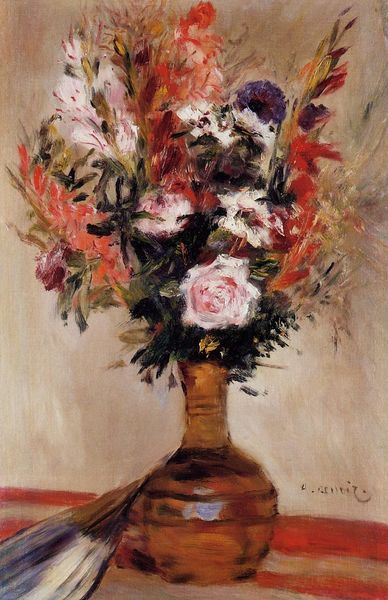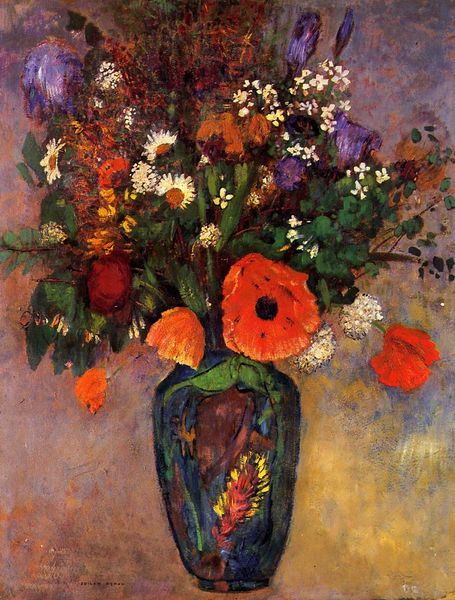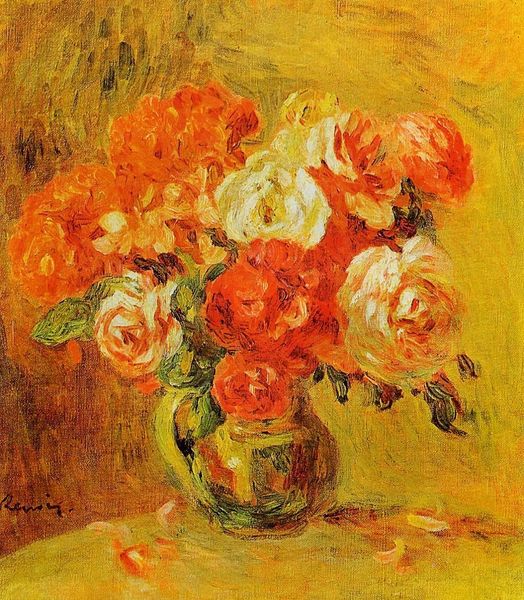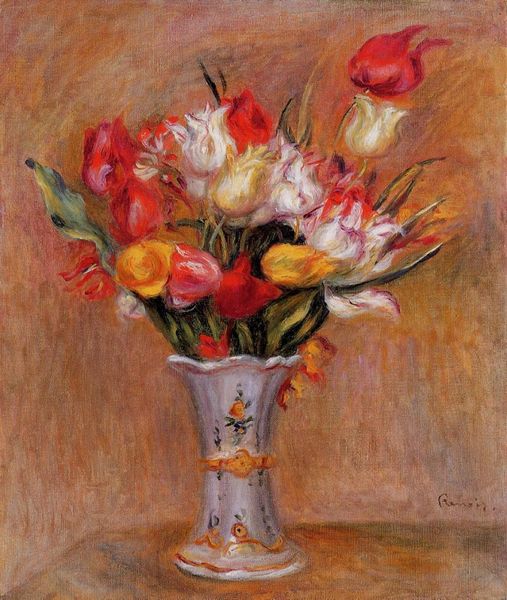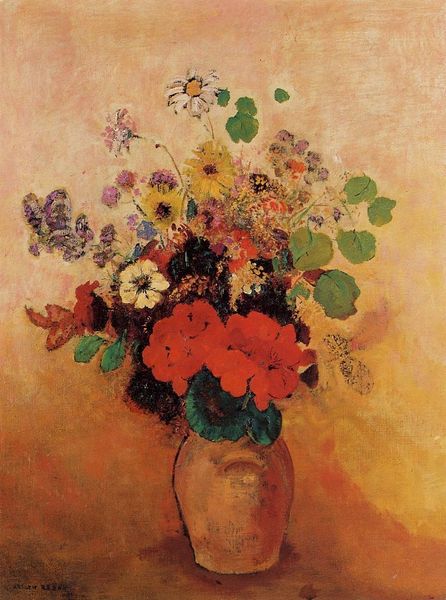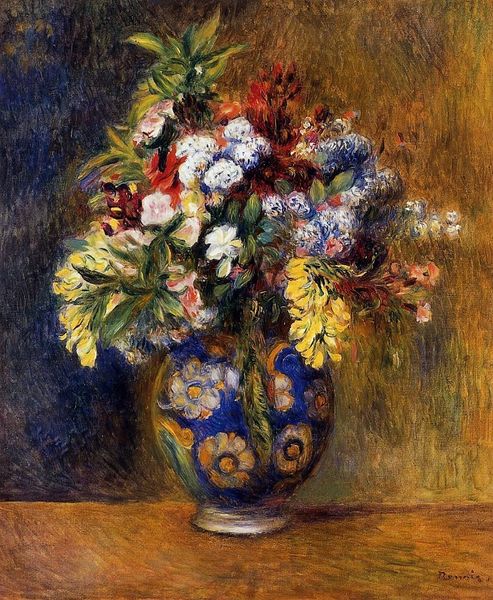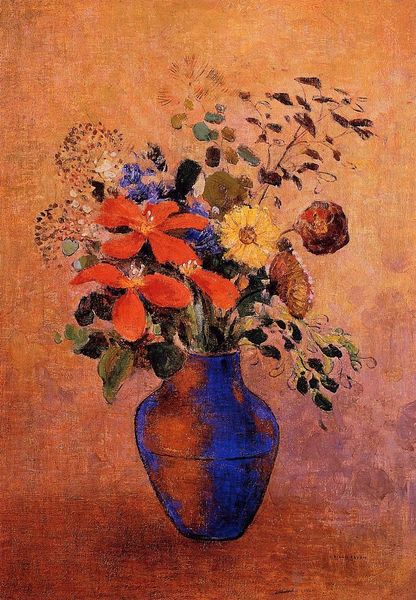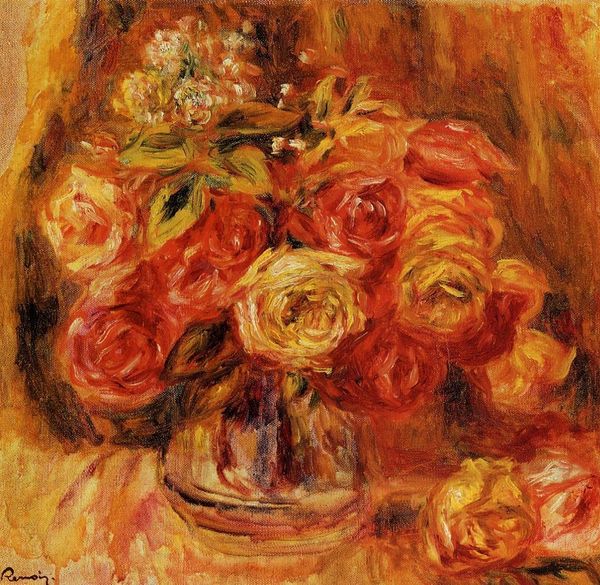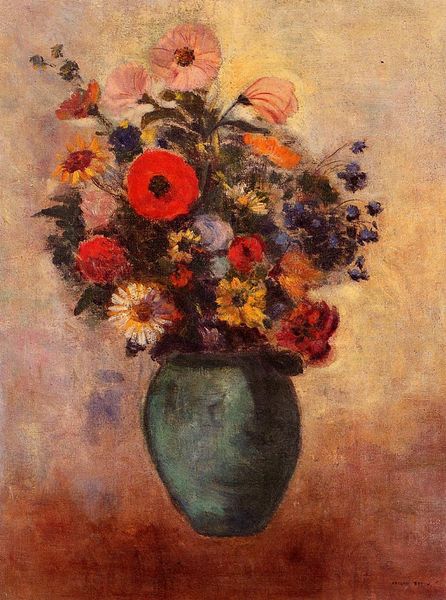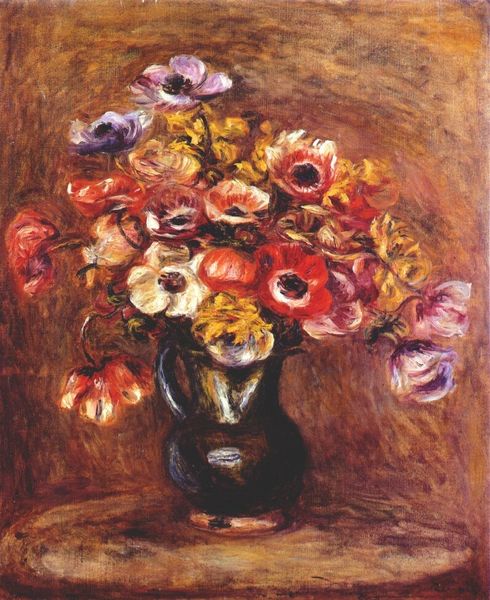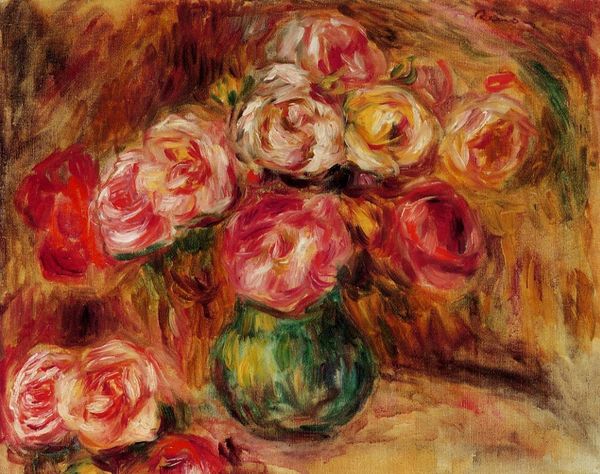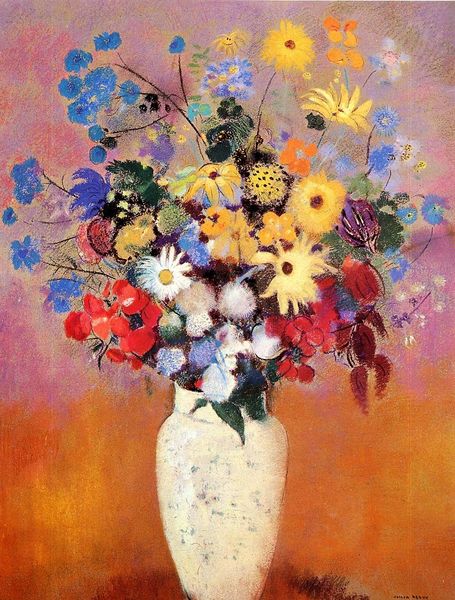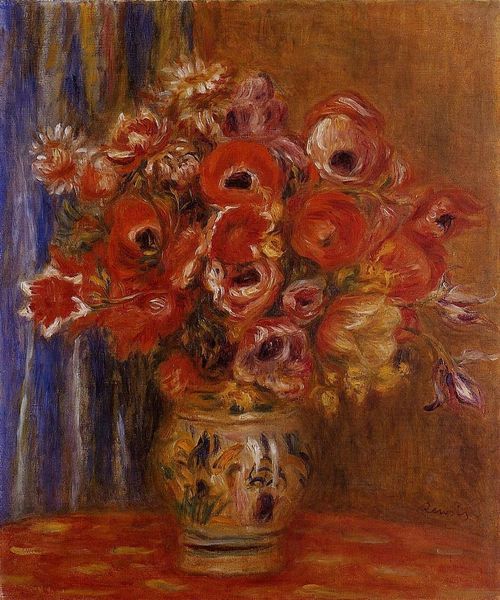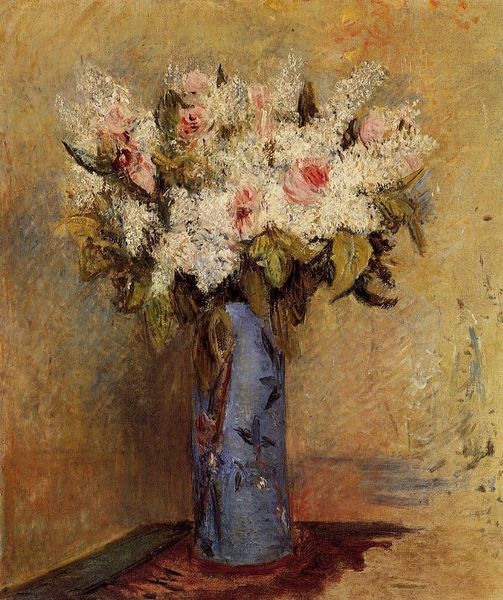
painting, plein-air, oil-paint
#
still-life
#
painting
#
impressionism
#
plein-air
#
oil-paint
#
flower
#
vase
#
oil painting
#
plant
Copyright: Public domain
Editor: So, we have Camille Pissarro’s “Vase of Flowers,” painted in 1878 using oil on canvas. There's something so vibrant about the blooms; they seem to almost leap off the canvas. What do you see in this piece? Curator: I see a carefully constructed dialogue between domesticity and the exotic. Pissarro, known for his landscapes depicting the laboring classes, here engages with a traditionally bourgeois subject: the still life. But what's striking is the orientalist aesthetic – the imported vase – placed in this intimate domestic setting. How does this juxtaposition inform your reading of the painting, considering the colonial context of the late 19th century? Editor: It’s interesting that you bring up colonialism; I hadn't considered the vase itself as a signifier. It almost feels like Pissarro is subtly acknowledging these global power dynamics within a seemingly innocent domestic scene. Curator: Exactly. And consider the symbolism of flowers – often associated with femininity and passivity. Is Pissarro reinforcing or challenging those traditional roles through his impressionistic style and deliberate composition? Think about how traditional landscapes rarely show signs of dwelling. Editor: So, the flowers, rendered with those loose brushstrokes, could be seen as destabilizing the rigid gender roles typically associated with floral paintings, while still highlighting the presence of the absent working-class labour? Curator: Precisely. It complicates the idea of still life as mere decoration, injecting it with questions about power, gender, and global exchange. Editor: I hadn't thought of it that way at all. It's amazing how much a single painting can tell us about the world around it, beyond just what's immediately visible. Curator: It truly reflects how we should approach and consider the cultural roots present within a piece of art and the impact it carries within society.
Comments
No comments
Be the first to comment and join the conversation on the ultimate creative platform.
